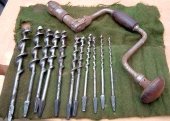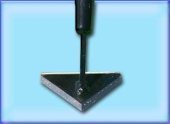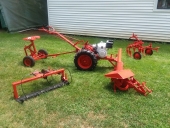Jay Angler wrote:Too often people push through to finish a job. Sometimes, changing the tool, so that you use different muscles for a while, will let you complete the task without over-straining the same muscles you've been stressing for long enough already.
Certainly, change tools. But more importantly, switch sides!
Switch your grip and do the exact same work with your non-dominant side. This gives overworked muscles a rest, and develops the ones that are neglected. It seems awkward at first, and inefficient, and it takes more focus, but you are training your brain to do a completely new thing! Resilience, baby!
This was a trick my father taught me, shoveling grain while the auger poured out an endless flood and we couldn't stop. Later, I learned to use a mouse with my left hand quite efficiently, because I had to in response to repetitive strain injuries. The switch works, and it's worth doing. And once you learn it, the brain never forgets!











